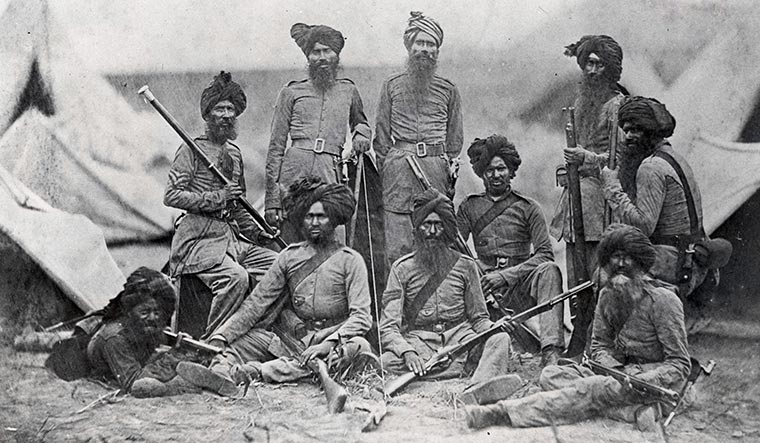
_resources1_16a4505bbb6_large.jpg)
Right when I assumed the ground was all gloss and no gore, I stumbled upon a small pyramid structure that screamed, "People were fired at from here".

The least the authorities could do was to let the barren land be so that it could justly reflect the dry spell the British colonisers imposed on India for 200 years. The embellishment only served as mockery to the deaths of the 379 people (unofficial figure: 1,000 approximately) and the wounds of 1,100 (unofficial figures: 1,500 approximately) figures. While the glossing over could be justified by arguing that the beautification was only a tribute to those who lost their lives, the soil was too soaked in blood to give birth to new life. The barren land, which saw scores of unarmed, innocent people fell on it, had been adorned with a green cover. Red stone structures stood erected at every few steps, with the intention of paying tribute to the 'martyrs'. But what the lane led to did not mirror the image in my head at all. The lane took me back to a couple of films which have depicted the Jallianwala Bagh rather graphically ( The Legend of Bhagat Singh and Rang De Basanti). Pigeons perched inside the roshandaans of those lanes remained silent spectators to our entry, like they would have been to Dyer and his troops 100 years ago. The lane was narrow to the extent that it was difficult to imagine troops of the British Indian Army march their way inside, loaded with ammunition. Jallianwala Bagh entrance in Amritsar, PunjabĪ tapering narrow lane led us to the main ground of Jallianwala Bagh. The towering black marble figure of Udham Singh, who assassinated the then-Lieutenant-Governor of Punjab, Michael O'Dwyer, guards the entrance, ensuring that another Colonel Reginald Dyer never steps foot into the premises again. Iron rails and red bricks, along with a suspended air of irrevocable loss, transported me to what a 20th-century jail would look like. When I turned around, the front part of Jallianwala Bagh looked no less unnerving. While the faces were completely unfamiliar, the visual as a whole looked eerily similar to a pile of pale-white bodies.

The faces of some of the people who lost their lives in the 13 April, 1919 massacre stared at me as if they knew me from some place before. Hurry!"), I found myself gravitating towards a tall marble-white statue in the central square. With my eyes set on the approaching destination, the corners did manage to catch a glimpse of the interesting surroundings - a bitch feeding four curious puppies and a reluctant stout old woman sweeping pigeon droppings in front of her shop, only to dump it in front of the neighbouring shop.Īs my friends dragged me to the entrance of Jallianwala Bagh ("It'll close in an hour. As the sky turned crimson, we navigated our way towards the main road.
#Jallianwala bagh sikhiwiki driver
The joyride ended soon when the tuk-tuk driver suggested (or demanded? The tone was ambiguous) us to walk our way to the main road as the bottleneck traffic in the narrow lanes would delay our arrival to the next stop: Jallianwala Bagh. As we whooshed past the busy lanes, the dazzling red streaks made the tributaries of Golden Temple Road bleed to life. Kalirey, or red bangles worn by brides on the wedding day, were up for sale. The driver of our e-rickshaw, or the 'tuk-tuk' as is referred to locally, manoeuvred us through lanes cramped with passers-by, vendors and protruding shops of bridal wear.


 0 kommentar(er)
0 kommentar(er)
